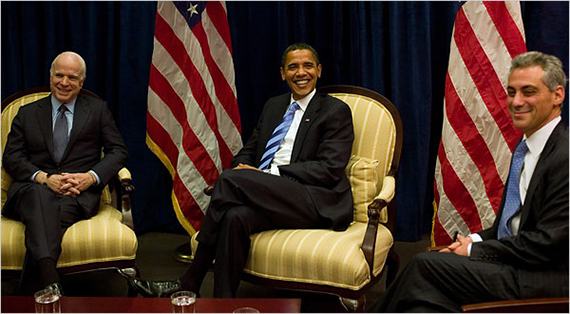
How does mirroring another person’s posture, gestures, and words improve our connection with them? Mirroring can be considered a form of empathy and “stepping into someone’s shoes.”
Mirroring is a social phenomenon where people mimic another person’s posture, gestures, and words.
It’s often an unconscious behavior – we are rarely aware of it when we do it – but it’s a sign that people are attuned and in sync to one another.
When two people are mirroring each other, it shows that there is comfort, trust, and rapport among them.
Long-term friends and romantic couples are particularly attuned to one another. If you ever go to a populated public area, like a park, mall, or busy street, you’ll often notice that couples are mirroring each other as they interact. It’s a part of our fundamental nature as social beings.
For example, I have a balcony in my apartment above a very busy street in Brooklyn. It’s a good spot for me to casually observe human behavior.
One common thing I find is couples walking in lock-step. They step with their left and right foot in perfect synchrony, like a marching band. They also tend to look at each other at the same time and look away at the same time. They literally seem connected to one another.
In many ways, mirroring can be seen as a form of perspective taking or empathy.
Previous research in psychology shows us that our bodies reveal a lot about the way we are thinking and feeling (the term for this is “embodied cognition”).
So by adopting another person’s postures and body language, we can get a better idea of what another person is experiencing from their perspective.
It’s not just that people like to see themselves mirrored back – it’s deeper than that. Mirroring shows a willingness to understand someone and genuinely connect with them.
Here’s an interesting example of mirroring between Barack Obama, John McCain, and Rahm Emanuel (three powerful politicians that are likely well-versed in the art of communication):

Mirroring is often associated with forms of nonverbal communication, like postures, gestures, facial expressions, or breathing. But we also mirror back words and spoken language.
By repeating back what people say, we often show that we understand them. A waiter or waitress who repeats back a customer’s order at a restaurant is more likely to remember it, then someone who just says, “Okay, got it!”
When we mirror people’s words (whether vocally or even inside our heads), our minds are doing a quick mental check to see if what we heard makes sense and that we understand it.
At a very basic level, all mirroring functions as a way to better understand the people we are interacting with.
How to practice mirroring in your daily interactions
While mirroring is often an unconscious process, there are things we can do to practice making it more natural for us.
As you see in the picture above, politicians are incredibly fluent in mirroring. They don’t even have to think about it, because they are used to interacting with people and building genuine connections; it’s what it takes to survive in the political world, where it’s important to understand people and win them over on a daily basis.
But many politicians also go through intensive training in body language and mirroring to get as good as they are. It’s something they needed to consciously practice throughout their life before it became second-nature. They have trainers and counselors who teach them the most effective ways to reach out to a wider audience.
However, the good news is you can also practice training yourself to become more fluent in mirroring. Here are some practical tips to get you started:
- Make note of mirroring in other people’s interactions. I mentioned this earlier, but being able to identify mirroring from an outside perspective will help you identify it better in your own interactions as well. If you can find a natural setting to do this, try movies or TV shows.
- Make note of mirroring in your own interactions. Become more aware when you find yourself (or another person) adopting a similar posture, or repeating back certain words, or taking a sip of a drink at the same time. Mirroring can be found to some extent in almost any interaction. You just have to pay attention to it more.
- Actively practice small forms of mirroring. Just focus on one aspect of mirroring in your interaction. If you’re sitting down, just mimic the person’s posture or hands (crossed/uncrossed, open stance/closed stance, etc.) Ask yourself, “What does this tell me about what the person is thinking or feeling?” Remember that mirroring is about empathy and attunement, not just mimicry for the sake of mimicry.
- Don’t be afraid to break mirroring. Trying to mirror everything all of the time will come off unnatural and awkward. Don’t be afraid to do your own thing and let the person do their own thing. You don’t need to be 100% physically in sync to be connecting with someone. It’s just one tool at your disposal.
Follow these basic principles, but don’t overwhelm yourself. Mirroring is an important tool in communication, but if you over-think it than it can backfire on you. Don’t think too much about mirroring if it distracts you from listening to others and having a real conversation.
What does it mean if someone isn’t mirroring?
Mirroring is a sign of comfort, trust, and rapport. So it’s possible that individuals who aren’t mirroring each other are experiencing some kind of conflict or they aren’t in sync.
If someone’s posture signals “I’m upset!” but the other person’s posture signals “I’m happy!” then there is likely a disconnect between the two people. Their thoughts and emotions aren’t aligned – and they probably aren’t communicating effectively.
The whole point of mirroring is that it’s a way to better understand others and connect with them at a real level. Being able to mirror someone is the same kind of ability as being able to listen to someone (it’s a different kind of listening).
Enter your email to stay updated on new articles in self improvement:
